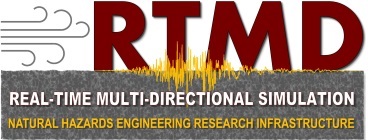Engineers re-create tsunami debris impacts to measure their force
April 4, 2014
In a tsunami, devastation is created by far more than the wave itself. Debris that hits homes and other structures plays a huge role in a tsunami’s destructive power. But until now, engineers could only estimate the forces at work when debris, such as a floating telephone pole, hits a house.
With support from the National Science Foundation (NSF), engineers from across the country have teamed up to design and carry out a series of large-scale tests aimed at better understanding exactly what happens when debris strikes. The research project is essentially looking at the types of debris that would be in a typical tsunami environment and what forces are being generated from them.
“This has been a fascinating project, coupling the Network for Earthquake Engineering (NEES) large-scale structures test facility at Lehigh University with the NEES Tsunami Research Facility at Oregon State University, and both providing data for the analytical work at the University of Hawaii,” says Ron Riggs, civil and environmental engineering professor at the University of Hawaii and lead engineer on the research.
The engineers use the data collected to validate computer models designed to predict how different types of debris respond under the stress of impact.
“The general understanding gained from these models allows the team to determine building design loads for impact by various debris types, based on their impact velocity, mass and stiffness,” explains Clay Naito, civil and environmental engineering professor at Lehigh University and a researcher on the project. “These data allow one to examine the response of buildings, and provides engineers with the information needed to design for an accidental impact.”
The researchers’ ultimate goal is to improve building designs so structures are built to better withstand the forces generated from tsunami debris.
“The amount of debris generated by the 2004 Indian Ocean, 2010 Chilean, and 2011 Japanese tsunamis highlight the need for this research to help us better design structures for debris loading when these disasters occur,” says Joy Pauschke, NEES program director within the NSF Engineering Directorate’s Division of Civil, Mechanical and Manufacturing Innovation.
The research in this episode is supported by NSF award #1041666, NEESR-CR: Impact Forces from Tsunami-Driven Debris, and award #1138668, Impact of Debris Generated from the 11 March 2011 Tohoku, Japan, Tsunami.
Miles O’Brien, Science Nation Correspondent
Kate Tobin, Science Nation Producer


